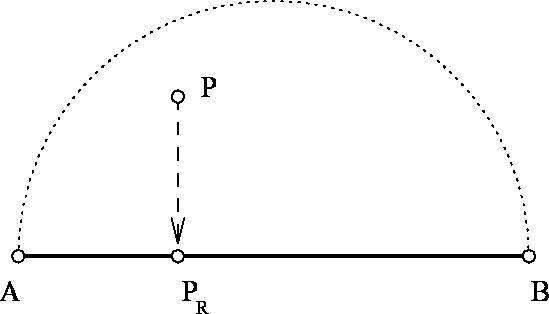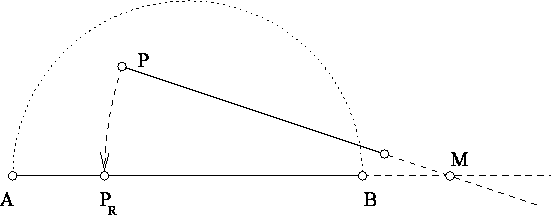 splits the boundary
edge (A B) into two
new boundary edges.
splits the boundary
edge (A B) into two
new boundary edges.





The required refinement of a boundary edge is due to the presence of a
node in its vicinity, so one of the most straightforward methods to
refine it is by orthogonal projection of the critical node
(c.f. node P in Figure 6.18) onto the boundary edge.
The created refining node  splits the boundary
edge (A B) into two
new boundary edges.
splits the boundary
edge (A B) into two
new boundary edges.

Figure 6.18: Boundary grid point insertion by orthogonal projection
Unfortunately, when the critical node is incident to another boundary edge, the created refinement node may itself, due to numerical errors, become a critical node for this boundary edge. This may lead to an endless refinement loop at acute corners of the geometry which limits the applicability of the orthogonal projection method to cases where the boundary edge to be refined and the boundary edges incident to node P do not intersect.

Figure 6.19: Boundary grid point insertion by azimuthal projection
For those cases where the ray of the boundary edge to be refined and the ray of
a boundary edge incident to the critical node P do intersect (as shown in
Figure 6.19), a rotation of the critical point P around the
intersection M is performed to produce the refinement point  .
This method is stable for acute corners of the geometry and its
stability is not prone to numerical errors.
.
This method is stable for acute corners of the geometry and its
stability is not prone to numerical errors.